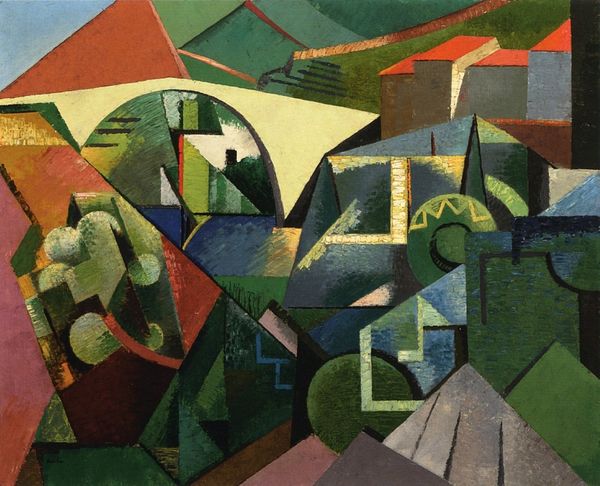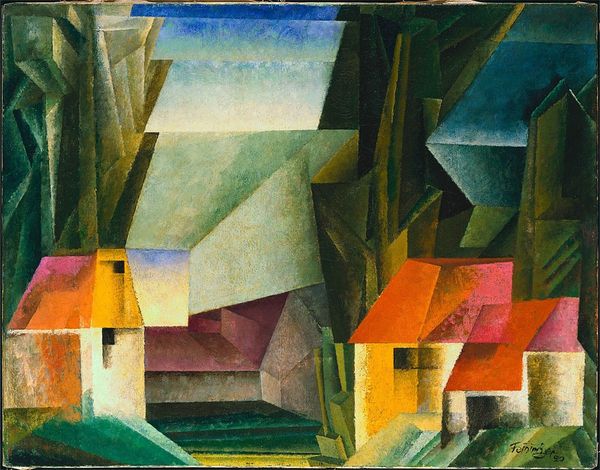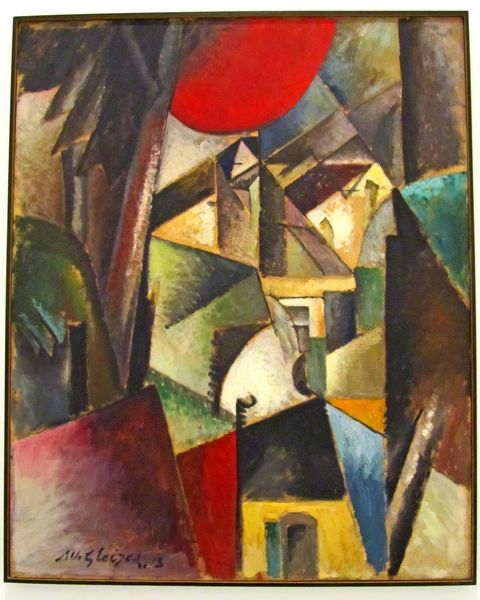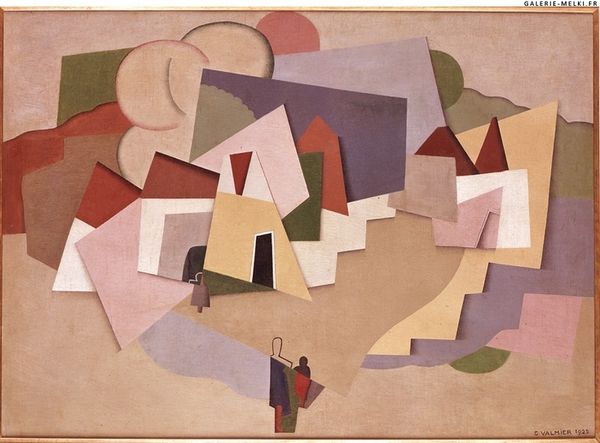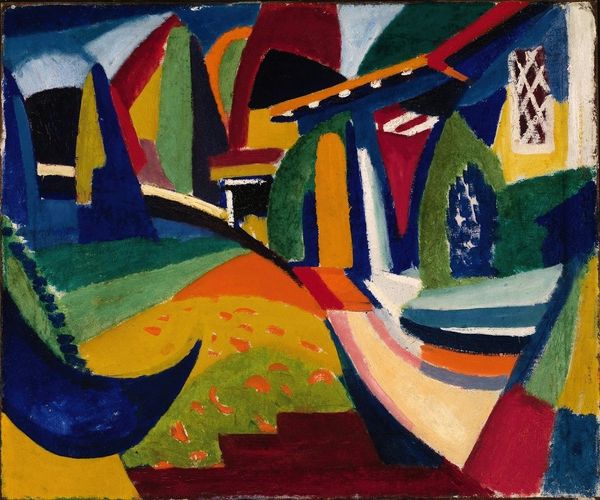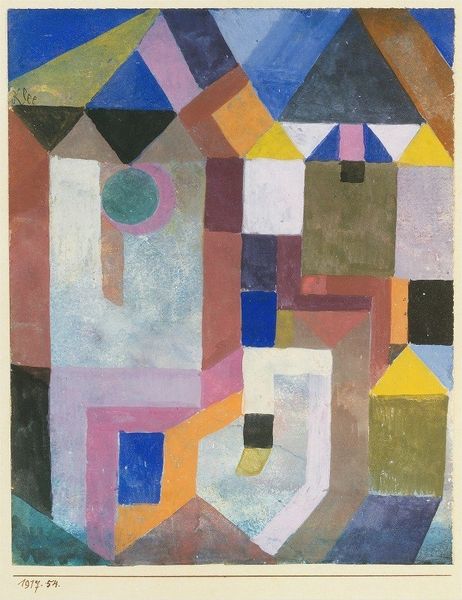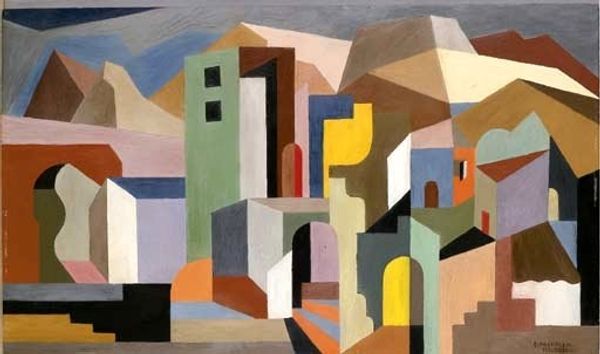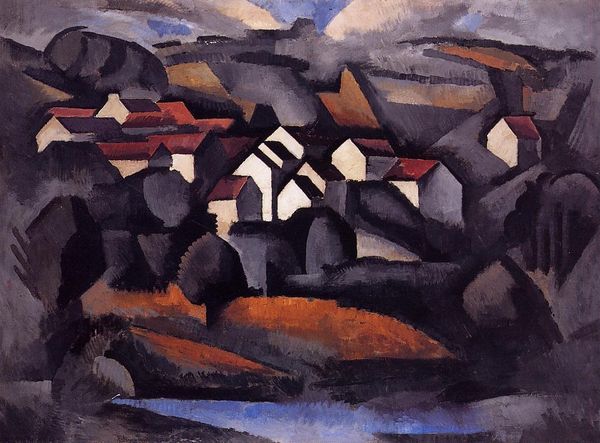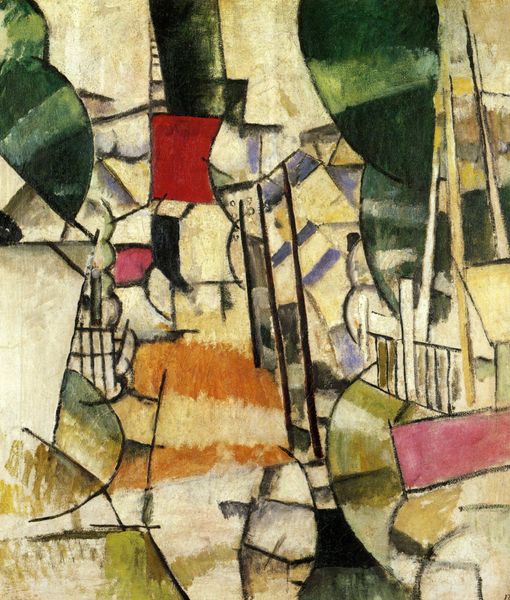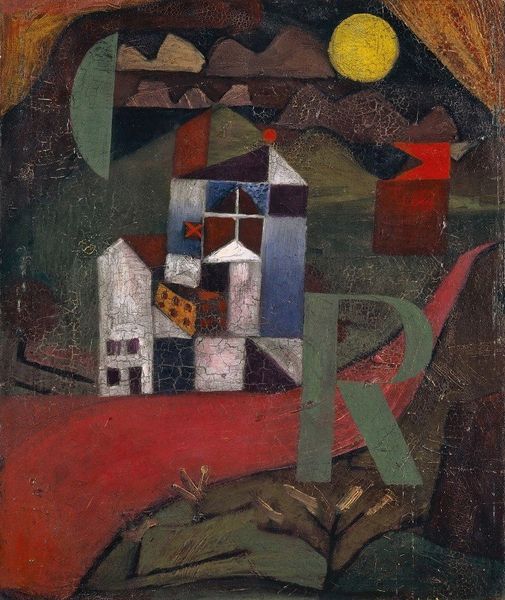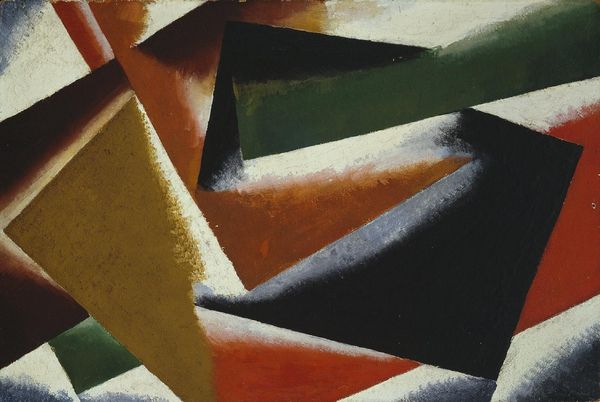
Copyright: Public domain US
Editor: We're looking at Enrico Prampolini's "Landscape," an oil painting from 1918. I'm immediately struck by how he’s fragmented this rural scene into geometric shapes. What stands out to you as we consider the period in which it was made? Curator: Considering the historical moment of 1918, just at the tail end of the First World War, the deconstruction of form in Prampolini’s "Landscape" speaks volumes about the shattered realities of the time. The fracturing of the landscape mirrors the fragmentation of European society. It's as though traditional perspectives, not only in art, but in life, had been broken. Do you think this resonates with Italian Futurism, of which Prampolini was a part? Editor: Absolutely. It's a landscape, yet it barely resembles one in the conventional sense. The Futurists embraced dynamism and speed, so how does that translate here, to what appears to be a static scene? Curator: That’s a fantastic question! Although seemingly static, the angular shapes and vibrant colours create a sense of restless energy. The eye jumps around, never settling on a single point. Furthermore, consider the cultural context: Futurism in Italy was often tied to nationalistic ideals. Does this abstract landscape reinforce a specific ideology through its aesthetic choices, perhaps glorifying an industrial future or referencing a perceived national identity? Editor: So, while it seems apolitical at first glance, the very act of breaking down a traditional subject like a landscape into abstract forms could be seen as a statement in itself, reflecting the changing socio-political landscape of Italy. Curator: Precisely. Prampolini isn't just painting a scene; he’s presenting a new way of seeing and, perhaps, a new way of understanding Italy’s place in a rapidly changing world. It underscores how art can both reflect and shape socio-political thought. Editor: I hadn’t thought about it that way. Thanks for opening up that perspective for me! Curator: My pleasure. Analyzing art through its socio-historical context often reveals hidden depths.
Comments
No comments
Be the first to comment and join the conversation on the ultimate creative platform.
